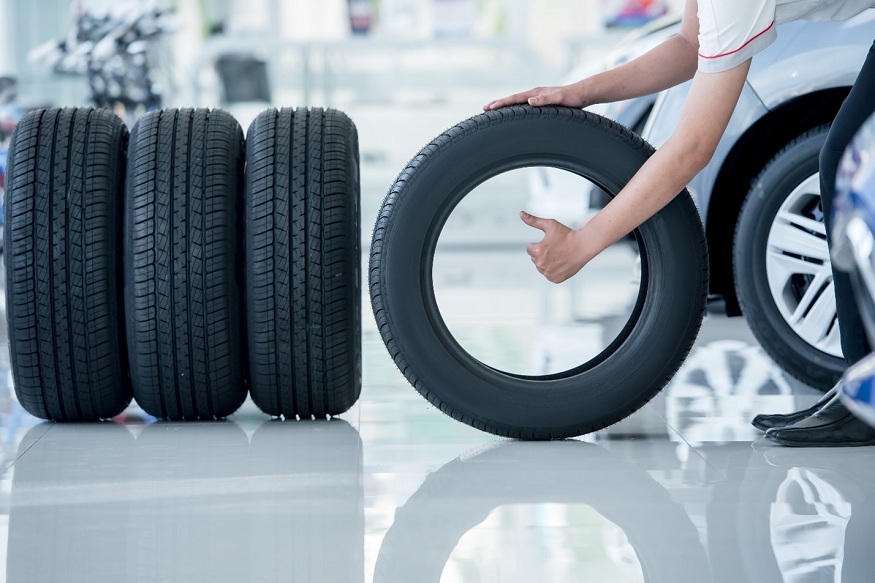Summer tires
Summer tires have a specific rubber compound that provides excellent grip and steering on dry and wet roads when it’s warmer. They also have reduced rolling resistance, better fuel efficiency, while reducing road noise.
The tread pattern of a summer tire is simpler than that of a winter tyre: it has fewer grooves for water evacuation, for a maximized contact patch on the road. Thus, the vehicle displays excellent grip and braking during the summer months.
In contrast, these same characteristics—the unique rubber compound and simple tread pattern—make summer tires ineffective in winter . When the temperature drops below 7 degrees Celcius, the compound hardens and becomes friable. The tread can then not apprehend snow or ice as it should.
Winter tires
The tread compound of a winter tire contains more natural rubber, which prevents it from hardening when the temperature drops below 7 degrees Celcius. It remains flexible when it is cold in order to reduce the braking distance.
The tread pattern features deeper blocks that dig into snow and frost for better grip. The winter tire also has many sipes, which are excellent for evacuating water and slush from under the car and reducing the risk of aquaplaning.
But winter tires should not be used in summer . The compound is far too soft for dry asphalt, which would lead to premature wear. Also, the increased rolling resistance will lead to higher fuel consumption and increased road noise.uzz.
All Season Tires – All Seasons
For now, no tire is perfect for dealing with all weather conditions throughout the year. As we have shown, a summer tire does not provide the necessary grip on the snow, and the performance of a winter tire is disastrous on the heat of the asphalt. But with an all-season tire you are getting closer to the ideal situation; if you live in a region where the climate remains moderate in summer and winter, or in a city where the roads are cleared of snow, and you travel less than 10,000 kilometers, it may be sufficient to meet your needs.
An all-season tire combines the characteristics of winter and summer tyres, and offers a hybrid solution with the advantages of both types of tyre. On the other hand, an all-season tire will never offer the seasonal specialization of a summer or winter tire in their respective elements. Remember, an all-season tire will never be more than a compromise that simply offers the right mix of features for drivers who don’t expect to face extreme weather conditions.
Run-flat tires
Runflat tires are one of the best inventions in the automotive industry since the arrival of the rubber tire or the change from bias tires to radial tires. Why are they revolutionary? In the event of a puncture , or a sudden drop in pressure, a runflat tire will remain fully operational until the driver returns home or drives to the nearest garage.
The functionality of a runflat tire is provided by thick and strong reinforced sidewalls, so that it can be used temporarily after a puncture. Generally speaking, you should be able to drive up to 80 kilometers on a flat run-flat tire. But remember that it is not repairable, and you will have to change it as soon as possible.
4×4 tires
4×4 tires display a wider tread pattern than conventional car tires, including wider blocks and deeper sipes. Standard tires perform poorly on surfaces such as mud because the tread quickly fills with mud and the wheel begins to spin, pushing the tire deeper and deeper into a hole. In comparison, 4×4 tires have better traction on difficult surfaces like mud, grass or snow, without clogging up the tread.

